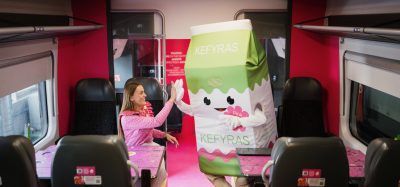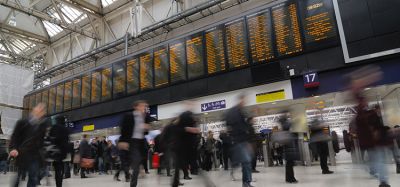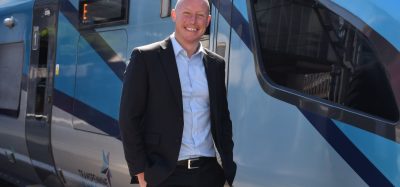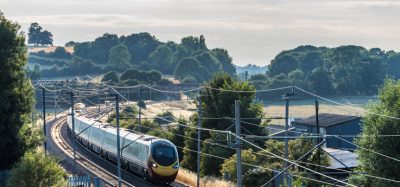Baltimore Washington Rapid Rail to offer employment opportunities to disadvantaged communities
Posted: 2 March 2021 | Global Railway Review | No comments yet
BWRR’s Diversity, Equity & Inclusion Plan for Economic Opportunity in Maryland will work to provide better opportunities to women and communities of colour.
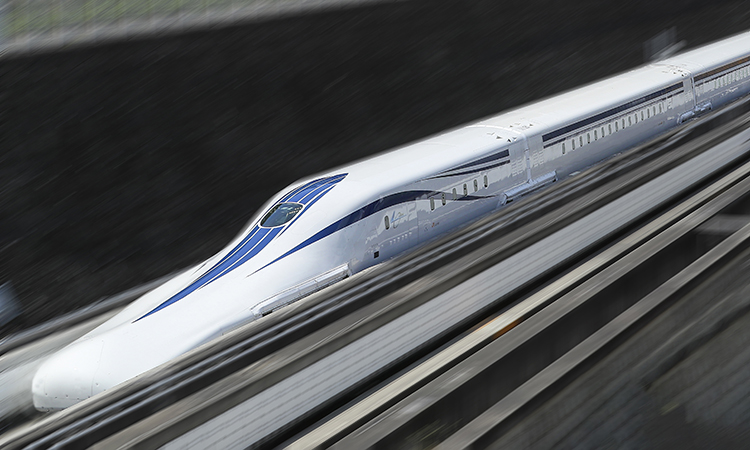

Credit: Baltimore Washington Rapid Rail
Baltimore Washington Rapid Rail (BWRR), the developer of the Baltimore-Washington Superconducting Maglev (SCMaglev) Project, has announced ambitious goals that would deliver billions of dollars of economic benefits to communities of colour, women and their businesses in constructing and operating the $13 billion high-speed train project.
Born from a commitment of corporate social responsibility, BWRR’s Diversity, Equity & Inclusion Plan for Economic Opportunity in Maryland will create unprecedented access to contracts and wages for many of Maryland’s disadvantaged and disenfranchised communities.
Of the 74,000 construction related jobs and 1,500 permanent jobs that the project is estimated to create in Maryland, BWRR has set goals for hiring 40 per cent of the construction workforce and 25 per cent of the permanent employees from diverse populations with a preference for the local jurisdictions that the route will pass through. These include abundant opportunities for communities in Prince George’s, Anne Arundel and Baltimore Counties and Baltimore City.
The buildout of the Maryland segment of the Baltimore-Washington SCMaglev Project will last approximately seven years and include: The construction of nearly 30 miles of tunnels; guideway; two stations (BWI Airport and Baltimore City); a 180-acre Train Maintenance Facility; and several smaller ancillary support facilities spread across the route.
In addition to the 40 per cent minority and women workforce goal, BWRR plans for 25 per cent of construction spend to be on government-certified Minority Business Enterprises (MBEs) and Women Business Enterprises (WBEs). Once construction is complete and revenue service begins, BWRR will require 25 per cent of long-term operating spend to be allocated for MBEs and WBEs.
One block from the Maryland State House, government, business and community leaders enthusiastically embraced BWRR’s DEI Plan as a pivotal development for the project. Many of these individuals will be among the representatives serving as key participants supporting the fine-tuning and implementation of the plan, which will provide a host of economic and social benefits.
“The current pandemic shows that communities of colour are particularly vulnerable during hard times, which is why a project like the SCMaglev train offering tens of thousands of jobs and billions of dollars of investment must be taken seriously,” said Maryland State Delegate Darryl Barnes, Chair of the Legislative Black Caucus of Maryland.
“For instance, Prince George’s will benefit from approximately 500 proposed permanent jobs, making it the largest concentration of jobs along the route. Residents will have access to thousands of union construction careers to help them to enter the middle class and, with some of our communities boasting Maryland’s highest number of minority businesses, we expect many local firms will find contracts,” Darryl added. “Jobseekers, contract seekers and others will be better off thanks to these pathways for county residents to grow and sustain wealth.”
The Baltimore-Washington SCMaglev project would bring the world’s fastest ground transportation system to the Northeast Corridor of the United States, beginning with a 36-mile route from Washington, D.C. to Baltimore City, with a stop at BWI Marshall Airport.
BWRR was awarded a railroad franchise for the project’s first leg in 2015 and will serve as the train’s developer and operator. Northeast Maglev works in coordination with BWRR to promote the project and its goal of offering one-hour SCMaglev service from Washington, D.C. to New York City.
“The SCMaglev train will be unparalleled in terms of the project’s scale, scope and impact, as we will transform the passenger experience and lives of residents from overlooked communities, especially as we will build in some of Maryland’s most culturally diverse areas,” said Wayne Rogers, Chairman and CEO of BWRR and Northeast Maglev.
“At this moment in our nation’s consciousness, we must create and sustain an exemplary model for diversity and inclusion in national infrastructure projects,” he added. “We are proud to announce the plan and work with equally committed partners.”
The Baltimore-Washington SCMaglev project is currently under review by federal, state and local agencies. The Federal Railroad Administration (FRA) and the Maryland Department of Transportation-Maryland Transit Administration (MDOT-MTA) released a Draft Environmental Impact Statement (DEIS) documenting the potential impacts of the project on 15 January 2021. A 90-day public comment period is currently underway through to 22 April 2021. In early 2022, a Final Environmental Impact Statement (FEIS) is expected to be released, followed shortly thereafter by a Record of Decision (ROD) that could clear the way for construction by early 2023.
The project will have a major positive impact on the environment. Transportation has become the largest source of greenhouse gases in the U.S., disproportionately affecting underprivileged communities. The Baltimore-Washington SCMaglev project is expected to take 16 million car trips off the road each year and reduce regional greenhouse gas emissions significantly.
BWRR will lead an initiative to open opportunities for building skills and wealth opportunities through employment where living wages and salaries with benefits will be available for Marylanders. This will include recruitment efforts to attract communities of colour and women. Some of the sources for job candidates will involve the faith-based community, government officials, high schools and colleges, non-profit organisations working with traditionally unemployed and under-employed individuals and state and local workforce development boards.
“In these times of acute economic distress, the Ministers’ Conference Empowerment Center Community Development Corporation (CDC) must be purposeful in being laser-like focused on projects, partners and people to help to remove long standing systemic barriers and open new doors for brighter futures through meaningful economic empowerment,” stated Bishop Kevin Daniels, Ph.D, the Ministers’ Conference Empowerment Center CDC’s Chairman. “We believe a project of the scale of the SCMaglev, the ability to be a partner on the Diversity, Equity and Inclusion Plan, and the ability to reach communities across Baltimore will enable us to play a supportive role in the project and make sure that our communities will be included in career and contract opportunities.”
Special emphasis will be on hiring individuals from Maryland jurisdictions along the SCMaglev train project’s route, where tens of thousands of construction and permanent jobs will be created. BWRR intends to work with local partners in outreach activities so that the project will be inclusive of recruits from targeted areas in the Anne Arundel, Baltimore, Prince George’s counties and Baltimore City.
As the DEIS process progresses, BWRR and Northeast Maglev are continuing to work to engage members of local communities, listening to residents and addressing concerns while partnering with organisations that seek to maximise the benefits associated with bringing a high-speed train to the region.
According to the DEIS, the project will create 161,000 to 195,000 job-years during the seven-year construction period across the Washington-Baltimore-Arlington Combined Statistical Area (CSA), generating $8.8 billion to $10.6 billion in employee earnings. These regional benefits would occur, according to the DEIS, where minority populations comprise 69.6 per cent of the total population and low-income populations make up 12.7 per cent of the environment affected by the SCMaglev.
“This project represents an opportunity to deliver totally green mass transit for the future, benefiting millions of people in Maryland, the Northeast Corridor and the United States of America,” said former U.S. Transportation Secretary, Rodney Slater. “As a member of the Northeast Maglev Advisory Board, I am very proud to work alongside others who recognise the unprecedented opportunity that this represents for our most diverse communities. This plan will be critical to ensure that those communities are represented equitably as we work to build the SCMaglev and share in its benefits together.”
A variety of organisations across the region have come out to support the Baltimore-Washington SCMaglev Project, including community groups and organisations representing business and labor across the region. Among the project’s growing list of supporters are: North America’s Building Trades Unions (NABTU); Greater Baltimore Urban League; National Capital Baptist Convention; the Maryland State Conference NAACP and four of its local branches in Baltimore City, Prince George’s, Anne Arundel and Baltimore Counties; four Baltimore-Washington Corridor Chambers of Commerce, including the Prince George’s Chamber of Commerce, Northern Anne Arundel County Chamber of Commerce, Baltimore City Chamber of Commerce and Baltimore County Chamber of Commerce; Eastern Atlantic States Regional Council of Carpenters; and the National Action Network.
Related topics
High-Speed Rail, Infrastructure Developments, The Supply Chain, The Workforce, Track Construction
Related organisations
Baltimore Washington Rapid Rail (BWRR), Federal Railroad Administration (FRA), Maryland Department of Transportation-Maryland Transit Administration (MDOT-MTA), Northeast Maglev




